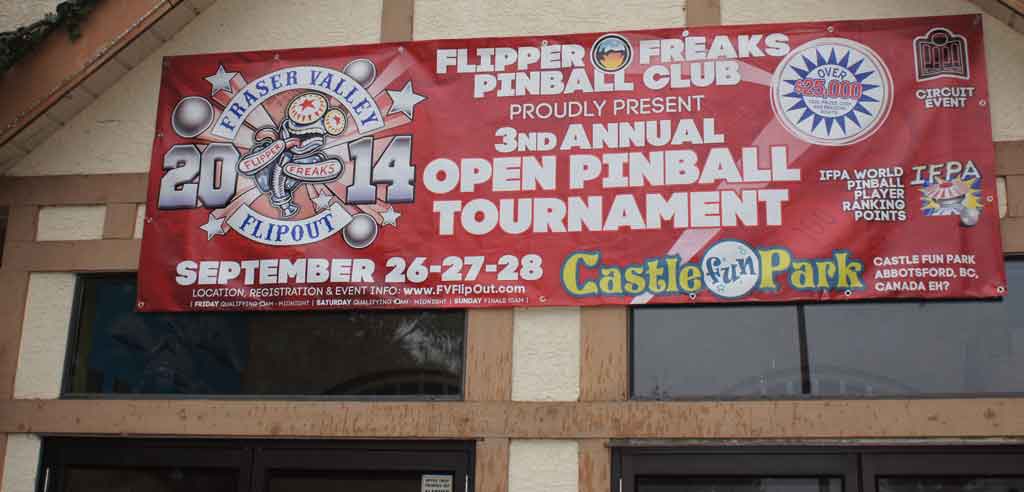By Jeremy Hannaford (Contributor) – Email
Print Edition: October 1, 2014

Despite heavy rainfall Friday morning, competitors were warm and in high spirits at Castle Fun Park as the third annual Flipper Freaks Pinball Tournament began. Over three days, over 175 pinball players brought their skills to the flippers as they attempted to qualify for the final bout on Sunday.
Flipper Freaks president and event-holder Tommy Floyd commented on the wide variety of players attending the event.
“We had players not just from the regional area,” Floyd explained. “We had them from as far back in Canada as New Brunswick and as far in the US as Chicago, California, and Pennsylvania!”
This tournament was the first of several major circuit events, and the first ever to be held in Canada. The top 16 overall players will face off in the finals held in Pennsylvania in August.
From Tomcat-14 to Black Knight, there were many classic pinball machines sitting amongst the 25 total inside the playing area. Of those 25, 10 machines were set up for free play, allowing everyone to play to their hearts’ desire. All of them were provided by the event hosting company Nitro Amusements from Mission. The other 15 were provided by local pinball enthusiasts, including Canada’s number three pinball player John Kremmer, who The Cascade interviewed last year.
Along with the main tournament, an additional tournament was conducted on classic machines dating all the way back to 1976. Despite their age, these machines looked as mint as their younger brethren. Their uniqueness was undeniable. Royal Flush, the oldest machine, only had a physical, not electronic scoreboard that only went up to 99,999!
The rules of the tournament were more liberal than in standard tournaments. Tommy Floyd imparted a series of ticket book point entries. Players were given three ticket books that included 10 entries each. Top scores were allocated and put up on the board to sort out the best of the best.
But despite this scoring system, the machines themselves were far more challenging than usual. Increasing goal activation requirements, removing saved balls, and widening drop areas were only a few of the modifications made to the machines.
Jim Belsito from California explained the reasons behind the modifications.
“If we left machines as they were, these guys could play all day,” he said. “They would all be able to easily roll the machines.”
Rolling the machines is when the player pushes the scoreboard past the maximum counter and starts from zero once again.
The top four finalists faced off in a four-game finale, with Dave Stewart, a computer engineer from Seattle, taking first prize in both the main and classic tournament. Dave received the $5,000 cash prize as well as a commemorative trophy. Canada’s number-one pinball player, Robert Gagno from Burnaby, took third place in the main tournament and second in the classic.
After the tournament ended, Tommy Floyd commented on the overall success of the event.
“We had a huge audience as far as watching the event,” he said. “It was really exciting … Next year is going to be even bigger!”


